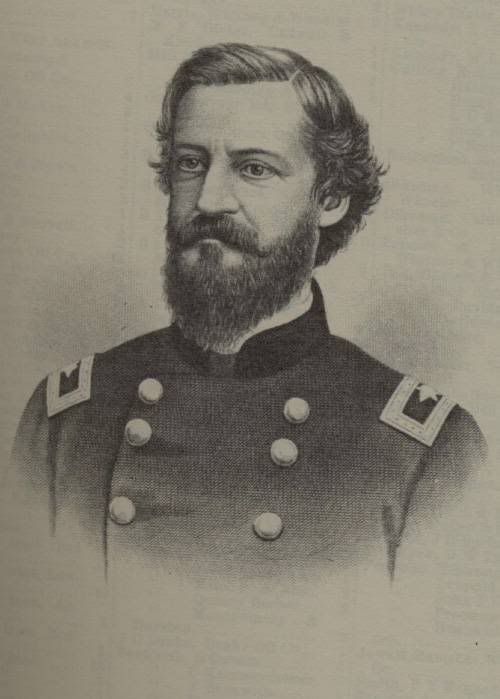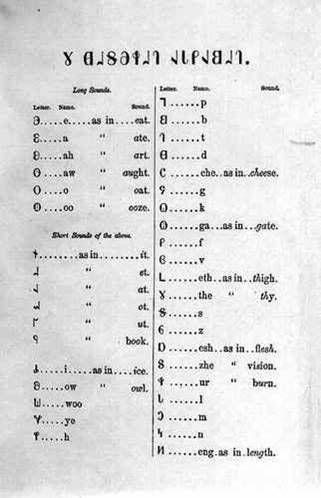Other Coded Names (“Our Friend”)
 A later instance of a code name began with a simple exchange of letters in 1851. “To Our Dear Friend, Colonel Kane,” began Brigham Young. “Our Friend, a title, than which we can give no greater; … we received it with pleasure, we impart [it] with delight.” “Our friend Colonel Kane” quickly became “our friend” in correspondence; eventually, “Our Friend” was used specifically to conceal Kane’s identity. Cannon’s letter cited in my introduction, for instance, describes his 1872 visit to “Our Friend,” and this 1860 letter from Utah Territorial Delegate William H. Hooper refers cryptically to “our Friend at P—.”
A later instance of a code name began with a simple exchange of letters in 1851. “To Our Dear Friend, Colonel Kane,” began Brigham Young. “Our Friend, a title, than which we can give no greater; … we received it with pleasure, we impart [it] with delight.” “Our friend Colonel Kane” quickly became “our friend” in correspondence; eventually, “Our Friend” was used specifically to conceal Kane’s identity. Cannon’s letter cited in my introduction, for instance, describes his 1872 visit to “Our Friend,” and this 1860 letter from Utah Territorial Delegate William H. Hooper refers cryptically to “our Friend at P—.”

In part because Kane was so often consulted for sensitive political advice, and in part because his correspondence had to pass through many unknown and mistrusted hands, a number of codes are associated with him:
Kane is named on a list of those possessing a cipher by which church leaders could communicate by telegraph or letter. This was a simple substitution cipher, meaning that every “A” in a message was replaced by Q; every “B” by U, and so on. Such ciphers are easily broken with a large enough sample: when you know that “E” is the most frequently used letter in written English, and when O appears most frequently in a coded message, you are on your way to breaking the code. To guard against clues based on word length, users of this cipher were taught: “[I]t can be made … more effective if two or more short words are … run together, so as to make them appear as one … and all long words divided and made to appear as two … .”
Mormon substitution cipher:
A = Q
B = U
C = J
D = N
E = O
F = A
G = Y
H = R
I = K
J = C
K = B
L = W
M = E
N = F
O = H
P = I
Q = T
R = D
S = L
T = X
U = M
V = Z
W = G
X = S
Y = P
Z = V
& = Q“Send John W. to Washington” became LOFN CHRF G XH GQLRKFYXHN or LOFNCHRF GXH GQLRF FYXHN
 Kane used a far more elaborate cipher in 1858. Kane’s father suggested its use, saying that he had received it from “old Dr. Patterson, and I am the only living person who has the key.” Robert Patterson, a relative of Kane’s mother and a mathematician who had provided a code for use on the Lewis & Clark expedition, was well equipped as a cryptographer. Clues suggest that this code was similar to one used by Cannon in the 1870s; we will return to it in part 3.
Kane used a far more elaborate cipher in 1858. Kane’s father suggested its use, saying that he had received it from “old Dr. Patterson, and I am the only living person who has the key.” Robert Patterson, a relative of Kane’s mother and a mathematician who had provided a code for use on the Lewis & Clark expedition, was well equipped as a cryptographer. Clues suggest that this code was similar to one used by Cannon in the 1870s; we will return to it in part 3.
Because of its complexities, the Kanes had difficulty using the Patterson cipher. Elizabeth Kane’s journal is dotted with these statements: “There is a letter in cipher to make out, … I worked till ten vainly trying to make out that cipher” and “Rose early, heard that Johnny had worked 4 hours at the cipher. I had made out one word, he none. … After dinner … I set to work again, … till half past ten. This made me dream of the cipher and made me wake often … with fragments of words tormenting me.” Despite its difficulties, Elizabeth did succeed in deciphering messages of some interest: “Brigham Young intends to take the guns. I shall probably be too late to make peace but not too late to prevent the spring massacre” was one such message.
Kane continued to depend on codes. In 1871 he wrote, “Be guarded in the extreme in your communications with me. … Such unworthy means have been used by your enemies … that I do not think they would scruple to waylay or arrest and search a person supposed to be bearing secret despatches … .” “Let me have … two ciphers, both private, but one for your eye alone,” he pleaded, to which John W. Young, as his father’s emissary, replied, “I appreciate your reasons for refusing to write my father …, unless by using a cipher furnished by him.”
Masonic or Pigpen Code
Kane’s codes always used roman letters. Many people associate “secret codes” not with such familiar letters but with mysterious-looking symbols; Mormonism has a taste of that, as well. One type is commonly called “Masonic” (because it appears in 18th century Masonic records), or “pigpen” code (because it looks something like a crude log pigpen). Here is one version provided to Brigham Young by Samuel W. Richards.

Despite Richards’ belief that “only one or two others have any knowledge of the system,” it is a simple variation of the Masonic code: a letter is represented by the shape of the cell to which it is assigned, modified by the addition of one or two dots as appropriate. Brigham Young’s name, as drawn by Richards, is so represented here.
![]()
The advantage of such a cipher is that as long as a user remembers the diagram, he can reconstruct it at will without having to memorize 26 letter substitutions. Disadvantages are that the cipher calls attention to itself; cannot be sent by telegraph; and is as susceptible to decoding as any other cipher: an “E” is still an “E,” whether it is represented by a Q or by a box with a dot.
I have discovered no instance where Richards’s pigpen code was actually used, although Brigham Young used a similar system in 1842 to record a plural marriage he had witnessed.
Deseret Alphabet
 Most students of Mormon history are familiar with another mysterious-looking writing system, the Deseret Alphabet. Despite revisionist claims, it seems clear from contemporary sources that the Alphabet’s sole original purpose was to increase Mormon literacy by simplifying the task of learning to read. To that end, the key to the Deseret characters was widely published – a practice that would seemingly destroy any possibility of the Alphabet’s being used as a secret code.
Most students of Mormon history are familiar with another mysterious-looking writing system, the Deseret Alphabet. Despite revisionist claims, it seems clear from contemporary sources that the Alphabet’s sole original purpose was to increase Mormon literacy by simplifying the task of learning to read. To that end, the key to the Deseret characters was widely published – a practice that would seemingly destroy any possibility of the Alphabet’s being used as a secret code.
Yet I have in fact found two instances where the Deseret Alphabet was used to conceal, in exactly the same way as any other code might have been used:
Eleanor McComb became a plural wife of Parley P. Pratt in 1855. In 1856, Pratt went to the States as a missionary, and Eleanor traveled to New Orleans to reclaim her children from the family where her former husband had placed them. Eleanor gained possession of her children, but then entered a period of concealment and flight, never more than a step ahead of her enraged former husband. During one hairbreadth escape Eleanor left behind letters written by Pratt, addressed to her as “Lucy R. Parker” and signed by “P. Parker.” Some of these letters were written
in the characters which the Mormons have invented … to … conceal their meaning, should their letters ever happen to fall into the hands of “Gentiles.” The letters thus written are as perfectly incomprehensible to us as they would be if written in Chinese.
One of the letters, apparently written in roman letters, explained some alterations to the Deseret Alphabet. Either through his familiarity with Mormonism while in San Francisco, or through the agency of apostate Mormons who were helping him trace Eleanor’s movements, Hector McLean recognized the writing as Deseret, obtained a key, read the letters, and caught up with the Pratts in Van Buren, Arkansas, where Parley was murdered and the children wrested from Eleanor’s control.
The second use of the Deseret Alphabet as a code of concealment occurred following the Utah War. Judge Cradlebaugh convened his court at Provo in 1859. Observers were stationed to report to Brigham Young on the progress of the inquiries, the temperament of the judge, and sometimes on the going rate for purchased testimony. These letters were written in plain roman characters – except when the reporter concealed the names of suborned witnesses with the use of Deseret characters.

This letter names two Mormon men offering their testimony for sale: The first was Alfred Nethercot, who “has been offered a span of Mules, Carriage, Provisions and Money to take him to California if he would come out and tell something against the leading men of Provo and Springville;” a week later, the judge “dismissed Mr. Nethercot, saying that he was a damned fool and did not know enough.” Nevertheless, Nethercot fled to California. In 1890 he returned to Utah and made peace with his brethren, ending his long life in 1905 as a Latter-day Saint in Salt Lake City.
The second man concealed behind an encrypted name here was Leonard Phillips. Whether his testimony was purchased cannot be known, but Phillips did prove abundantly willing to testify in high profile matters, including the Parrish-Potter murder inquiry of 1859 and the trial of Howard Spencer for the 1860 murder of Sgt. Ralph Pike. Phillips had sworn in an affidavit that his life was “in imminent peril from the Mormon community” as a result of his testimony; be that as it may, Phillips remained safely in Utah until his death in 1897.
To be continued
Continue reading at the original source →



